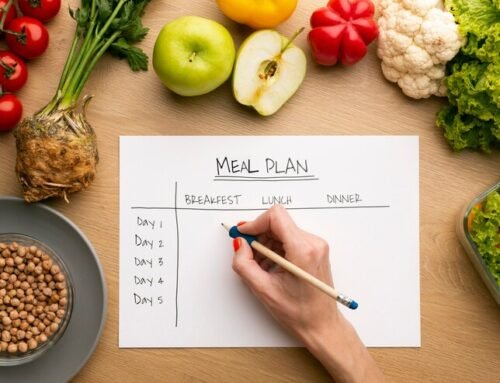The Atkins Diet, renowned for its low-carbohydrate approach, has helped millions of people achieve significant weight loss and improve their overall health. However, maintaining long-term success on this diet can be challenging, especially after the initial weight loss phase. This article will provide insights on how to maintain the Atkins Diet long-term, offering strategies to stay motivated, avoid common pitfalls, and enjoy the benefits of a healthy, low-carb lifestyle.
Key Takeaway : Atkins Diet
- Find Your Carb Tolerance: Gradually increase carb intake to discover your ideal balance for weight maintenance without gaining.
- Focus on Whole Foods: Prioritize unprocessed, nutrient-dense foods like vegetables, lean proteins, and healthy fats to support long-term health.
- Stay Active: Regular exercise, combining both cardio and strength training, is crucial to sustaining weight loss and improving metabolism.
- Track Progress: Monitor your weight, measurements, and food intake to ensure you’re staying on track and adjusting as needed.
- Flexibility and Balance: Be adaptable during special occasions or social events while maintaining consistency in your overall diet plan.
1. Understand the Basics of the Atkins Diet

Before diving into how to maintain success on the Atkins Diet, it’s crucial to understand its core principles. The Atkins Diet is divided into four phases:
- Phase 1: Induction – The most restrictive phase, with a daily carb limit of 20 grams (mainly from vegetables). This phase aims to kickstart weight loss by inducing ketosis, a metabolic state where the body burns fat for energy.
- Phase 2: Balancing – Gradually increase your carb intake by adding low-carb vegetables, nuts, and berries while still keeping carbs low enough to maintain weight loss.
- Phase 3: Pre-Maintenance – This phase is designed for individuals who are close to their target weight. Carbs are further increased until weight loss slows down, and the focus shifts to learning how to maintain weight loss.
- Phase 4: Maintenance – The final phase is about finding the right balance of carbs that you can eat without gaining weight. This phase should be followed indefinitely to maintain long-term success.
2. Focus on Whole, Unprocessed Foods
One of the key aspects of the Atkins Diet is its emphasis on whole, unprocessed foods. Maintaining long-term success requires making this a habit. It’s easy to fall into the trap of relying on processed low-carb products like bars, shakes, and pre-packaged meals, but these often contain artificial sweeteners and preservatives that can disrupt your body’s natural balance.
Tip: Incorporate fresh vegetables, lean proteins, and healthy fats into every meal. Some good choices include leafy greens, avocados, eggs, chicken, and fatty fish like salmon. Avoid processed meats, which can be high in sodium and preservatives.
3. Practice Portion Control
While the Atkins Diet does not require counting calories, it’s still important to be mindful of portion sizes, especially in later phases where more foods are reintroduced. Overeating even low-carb foods can lead to weight gain.
Tip: Use smaller plates to help control portions and try to eat until you’re satisfied, not stuffed. Keep track of your food intake by logging meals to ensure you’re sticking to your desired portion sizes.
4. Find Your Ideal Carb Tolerance Level
One of the challenges of maintaining success on the Atkins Diet is finding the right balance of carbs that works for you. Each individual has a unique tolerance to carbs, and discovering your ideal carb level is essential to maintain weight loss while avoiding weight gain.
Tip: Gradually increase your carb intake as you progress through the phases and monitor how your body responds. In Phase 4, you should aim to eat just enough carbs to maintain weight without entering a state of weight gain.
5. Stay Active and Exercise Regularly

While the Atkins Diet promotes weight loss primarily through dietary changes, incorporating regular physical activity into your lifestyle can help maintain long-term success. Exercise helps regulate blood sugar levels, supports metabolism, and aids in fat loss.
Tip: Aim for a combination of cardio and strength training exercises at least 3-4 times a week. This could include walking, running, cycling, swimming, or weightlifting. Find an activity you enjoy to ensure you stick with it long-term.
6. Avoid Falling into “Atkins Flu” Trap
When starting the Atkins Diet, especially during the induction phase, many people experience flu-like symptoms known as “Atkins flu.” These symptoms are due to the body adjusting to a low-carb, high-fat diet and can include headaches, fatigue, and irritability. These symptoms typically subside after a few days, but they can be discouraging for some people.
Tip: Stay hydrated, get plenty of electrolytes (such as sodium, potassium, and magnesium), and ensure you’re consuming enough fats to keep your energy levels stable. If the symptoms persist, consult with a healthcare professional.
7. Mind Your Relationship with Food
Maintaining a healthy relationship with food is crucial for long-term success. It’s easy to develop an unhealthy mindset around eating, especially when following a restrictive diet. However, a restrictive mindset can lead to feelings of deprivation and eventual binges or a return to unhealthy eating habits.
Tip: Instead of viewing the Atkins Diet as a “temporary diet,” treat it as a long-term lifestyle change. Focus on nourishing your body with healthy, wholesome foods and be mindful of emotional eating triggers. It’s okay to indulge occasionally, but balance is key.
8. Track Your Progress Regularly
While the initial weight loss might motivate you, maintaining that weight loss over time requires ongoing monitoring. Regularly tracking your weight, measurements, and food intake can help you stay on track and avoid unnecessary weight gain.
Tip: Weigh yourself weekly rather than daily, as weight fluctuates naturally. Take body measurements (waist, hips, chest) once a month to monitor changes that aren’t reflected on the scale.
9. Incorporate Healthy Fats
The Atkins Diet is high in fat, but it’s important to ensure you’re consuming the right types of fats. Healthy fats such as those found in olive oil, avocado, and fatty fish should be prioritized over unhealthy fats like trans fats and processed vegetable oils.
Tip: Focus on monounsaturated and polyunsaturated fats from sources like avocados, nuts, seeds, and fatty fish. Avoid processed foods and refined oils, which can contribute to inflammation and weight gain.
10. Get Support from a Community
The journey toward maintaining success on the Atkins Diet can be challenging, especially when it feels like you’re doing it alone. Finding a community or support group can provide motivation, encouragement, and accountability.
Tip: Join online Atkins Diet forums, social media groups, or find a friend who is also following the diet. Sharing recipes, tips, and experiences can make the process more enjoyable and help you stay committed.
11. Maintain Flexibility for Life’s Events

Life is unpredictable, and social events, holidays, or special occasions can often make it challenging to stick to a strict low-carb diet. It’s important to stay flexible while remaining committed to your overall goals.
Tip: If you’re attending a social event, plan ahead. Eat a small, satisfying meal before you go to avoid temptation, and choose lower-carb options when possible. If you do indulge, get back on track the next day without guilt.
Also Read : 5 Ways To Add Chia Seeds To Weight Loss Diet
Conclusion
Maintaining long-term success on the Atkins Diet is about finding a balance between enjoying foods that work for your body and adhering to the principles of the diet. By focusing on whole foods, practicing portion control, staying active, and monitoring your progress, you can maintain your weight loss and improve your overall health. Remember, it’s not about perfection—it’s about consistency and making choices that align with your health goals.
FAQs
1. Can I follow the Atkins Diet long-term?
Yes, the Atkins Diet is designed to be a long-term lifestyle choice. The key is to find the right balance of carbs for your body and to focus on whole, nutrient-dense foods.
2. Will I gain weight after I stop the Atkins Diet?
It’s possible to regain weight if you increase your carb intake too quickly or return to unhealthy eating habits. Gradually reintroduce carbs while paying attention to your body’s signals to prevent weight gain.
3. Can I cheat on the Atkins Diet occasionally?
While it’s important to stick to the principles of the diet, occasional indulgences are allowed as long as they don’t disrupt your overall progress. Just be sure to get back on track immediately after.
4. How do I avoid the “Atkins flu”?
Stay hydrated, get enough electrolytes, and ensure you’re eating enough healthy fats. The symptoms typically pass after a few days, but if they persist, consult with a healthcare professional.
5. How do I know if the Atkins Diet is right for me?
The Atkins Diet may be suitable for individuals who want to reduce carbohydrate intake and focus on healthy fats and proteins. Consult with a healthcare professional to ensure it aligns with your health goals.








Leave A Comment